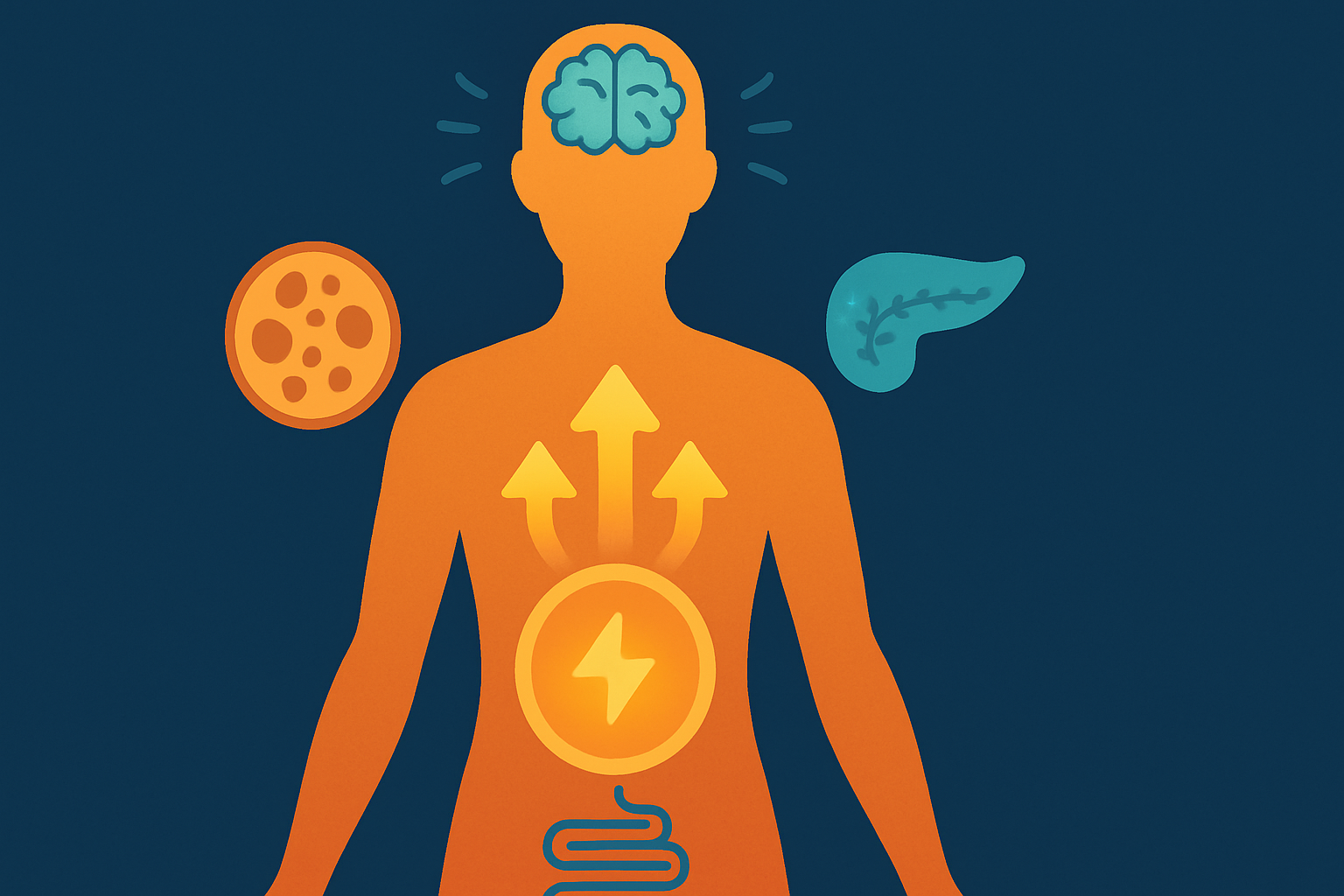In the pursuit of effective yet sustainable weight management, many individuals are turning toward unconventional but highly effective approaches. One such method gaining increasing attention is lazy yoga for weight loss—a gentle, low-impact practice that offers measurable benefits without the physical strain commonly associated with high-intensity exercise. Contrary to the perception that weight loss requires relentless cardio or punishing gym routines, lazy yoga presents a compelling case for achieving fat loss through intentional movement, breath control, and mind-body alignment. This article explores how this understated approach to fitness can lead to real and lasting results, particularly for those seeking a more mindful and manageable path to health.
You may also like: 10 Proven Benefits of Natural Herbs for Weight Loss Backed by Science

Understanding the Principles Behind Lazy Yoga
At its core, lazy yoga refers to a modified set of yoga practices that prioritize ease, relaxation, and slow, deliberate movement over athletic prowess or physical intensity. It is often characterized by extended poses, gentle stretches, and guided breathing—a fusion of restorative and yin yoga elements designed to activate the parasympathetic nervous system. While it may appear passive on the surface, the physiological engagement it demands is both subtle and powerful.
The effectiveness of lazy yoga lies in its ability to stimulate metabolic activity without overwhelming the body. When practiced consistently, these routines support improved lymphatic flow, hormone regulation, and digestion—all of which are crucial factors in effective weight management. Unlike more aggressive forms of exercise that can elevate cortisol and lead to stress-related fat retention, lazy yoga promotes calmness and balance, making it especially beneficial for individuals with adrenal fatigue, thyroid conditions, or anxiety-driven eating habits.
Another important dimension of lazy yoga is its accessibility. This practice welcomes people of all body types, fitness levels, and ages, democratizing the journey toward better health. By focusing on comfort and breath rather than competition or contortion, lazy yoga fosters a supportive environment that encourages consistency—a key factor in any weight loss strategy. Its inclusive nature removes the intimidation often associated with traditional gym culture, replacing it with a gentle, encouraging atmosphere that fosters sustainable wellness.

Lazy Yoga for Weight Loss: How Slow Movements Activate Fat Burn
One of the most misunderstood aspects of weight management is the belief that only high-impact exercise can promote fat loss. However, the practice of lazy yoga for weight loss challenges this notion by showing how slow, controlled movements can activate the body’s fat-burning mechanisms. When a person engages in sustained, mindful poses, their muscles remain engaged over time, creating an isometric hold that strengthens and tones.
From a physiological standpoint, slow movement encourages deeper muscle activation, especially in stabilizing muscles that are often overlooked during faster routines. This sustained engagement not only strengthens muscle fibers but also stimulates metabolism. As the body works to maintain balance and control, it draws upon stored energy—primarily from fat stores—to sustain the movement.
Moreover, the deep breathing techniques integral to lazy yoga increase oxygen intake, which plays a direct role in the oxidation of fat cells. This oxygenation process is essential in converting fat into usable energy, thus supporting gradual and consistent weight loss. Practitioners often report improved digestion, reduced bloating, and enhanced energy levels after just a few weeks, all of which contribute to a leaner physique over time.
Another critical element of lazy yoga is its ability to regulate cortisol, the stress hormone linked to abdominal fat retention. By emphasizing relaxation and breath work, lazy yoga reduces stress-induced cravings and promotes emotional stability. This helps mitigate one of the major psychological barriers to weight loss: emotional eating. As cortisol levels normalize, the body becomes more efficient in burning fat rather than storing it.

Why Weight Loss Yoga for Beginners Often Begins with Stillness
Weight loss yoga for beginners often starts with stillness, and for good reason. When someone new to yoga begins their journey, they may lack the flexibility, balance, or endurance that more dynamic flows demand. Lazy yoga serves as a perfect entry point, allowing novices to become familiar with their bodies without the risk of strain or injury. This gradual introduction cultivates body awareness, which is critical for long-term success in any fitness regimen.
The emphasis on stillness in lazy yoga provides an opportunity to establish a foundational understanding of alignment, breath coordination, and bodily sensations. These skills are transferable to more advanced practices, making lazy yoga an excellent stepping stone for future progress. Additionally, stillness offers a meditative quality that nurtures a sense of inner peace—a state often overlooked but deeply connected to sustainable weight management.
For beginners, the non-judgmental space that lazy yoga creates is particularly empowering. It eliminates the pressure to perform or meet certain aesthetic standards, replacing it with a focus on internal progress. By emphasizing comfort and mindfulness, the practice encourages regular participation, which in turn yields cumulative results. In contrast to rigid fitness programs that may lead to burnout or dropout, lazy yoga aligns with a more compassionate, intuitive approach to weight loss.
Furthermore, the stillness cultivated in beginner-friendly lazy yoga sessions fosters better sleep, improved digestion, and reduced inflammation—all of which support healthy metabolic function. Rather than exhausting the body, lazy yoga rejuvenates it, creating a positive feedback loop that enhances overall well-being. The resulting improvements in mood, energy, and self-perception can be transformative, particularly for those who have struggled with weight cycling or negative body image.

Incorporating Yoga Exercises for Weight Loss into a Daily Routine
Incorporating yoga exercises for weight loss into a daily routine does not require dramatic lifestyle changes. In fact, one of the most appealing aspects of lazy yoga is its seamless integration into even the busiest schedules. Short, 15- to 30-minute sessions can be done at home, in the office, or even during travel, making it a versatile tool for consistent wellness.
A daily lazy yoga routine typically involves a combination of gentle stretching, breathwork, and meditative stillness. Common poses include Child’s Pose, Legs-Up-the-Wall, Supine Twist, and Supported Bridge. These positions not only release muscular tension but also stimulate the digestive organs and endocrine system, promoting hormonal balance and fat metabolism.
The key to success lies in consistency rather than intensity. By committing to a brief but mindful practice each day, practitioners begin to see subtle shifts in posture, energy levels, and appetite regulation. Over time, these incremental changes lead to significant results, including improved muscle tone, reduced body fat, and enhanced metabolic efficiency. The body becomes more efficient in burning calories at rest, a phenomenon known as increased basal metabolic rate.
It’s also worth noting that yoga exercises for weight loss have a compounding effect when paired with balanced nutrition and adequate hydration. Lazy yoga creates a mindful awareness that often leads practitioners to make healthier food choices and tune into their body’s true hunger and satiety cues. This intuitive relationship with food further supports weight loss efforts without the need for restrictive dieting.
Integrating lazy yoga into a morning or evening routine can also set the tone for the day or facilitate better sleep. Morning sessions can energize and prepare the mind for productivity, while evening practices encourage deep relaxation and improved sleep quality. Both scenarios contribute to a hormonal environment conducive to weight loss, particularly when stress and poor sleep are barriers to progress.

The Science Behind Yoga Fat Loss and Metabolic Efficiency
The science supporting yoga fat loss centers on several physiological and biochemical mechanisms. While yoga may not produce the immediate calorie burn of a high-intensity workout, its cumulative impact on hormonal regulation, stress response, and metabolic efficiency is well-documented in emerging research. Lazy yoga, in particular, has been shown to influence the endocrine system in ways that favor fat loss and improved energy utilization.
One of the key contributors to yoga fat loss is improved insulin sensitivity. When muscles are gently engaged over time, they become more efficient at absorbing glucose, thereby reducing blood sugar levels and minimizing fat storage. This process helps the body prioritize fat as a primary fuel source, particularly when combined with controlled breathing that enhances oxygen availability.
Another mechanism involves the reduction of systemic inflammation. Chronic inflammation is a known driver of metabolic dysfunction and weight gain, often exacerbated by poor diet, stress, and sedentary behavior. Lazy yoga counters this by promoting lymphatic drainage, stimulating vagus nerve activity, and enhancing circulation—all of which contribute to a less inflammatory internal environment.
Additionally, lazy yoga modulates key hormones involved in appetite and satiety, such as leptin, ghrelin, and cortisol. By promoting hormonal balance, the practice helps regulate hunger cues and reduce emotional eating patterns that often undermine weight loss efforts. It also supports thyroid function, which is critical for maintaining a healthy metabolic rate.
The integration of mindfulness into lazy yoga enhances these physiological effects. Studies show that mindful movement practices improve body awareness and reduce self-sabotaging behaviors like binge eating or skipping meals. This psychological resilience is essential for navigating the emotional landscape of weight loss, where frustration and impatience can derail progress. Lazy yoga cultivates the inner calm and discipline needed to stay the course.
Lazy Yoga for Weight Loss as a Long-Term Lifestyle Practice
For sustainable weight loss and long-term wellness, lazy yoga offers more than just a physical workout—it provides a holistic framework for healthy living. Unlike short-term fitness fads that prioritize aesthetics over well-being, lazy yoga fosters a deeper connection between mind and body, encouraging lifelong habits that support metabolic health, emotional balance, and physical vitality.
A key advantage of lazy yoga for weight loss is its adaptability. As practitioners progress, they can tailor their routines to meet evolving needs, whether that involves increasing pose duration, incorporating light resistance, or exploring new breathwork techniques. This dynamic nature ensures that the practice remains engaging and relevant, avoiding the stagnation that often leads to plateaus or dropout.
Lazy yoga also complements other wellness practices such as mindful eating, intuitive movement, and stress reduction. Its emphasis on internal awareness cultivates a heightened sensitivity to the body’s signals, enabling more informed choices about nutrition, sleep, and activity. This integrative approach creates a synergistic effect where each component reinforces the others, resulting in compounded health benefits over time.
Moreover, lazy yoga is a powerful tool for weight maintenance after reaching one’s target goals. By continuing a gentle yet consistent practice, individuals can preserve muscle mass, regulate appetite, and maintain a healthy metabolism without the need for drastic interventions. This contrasts sharply with traditional weight loss methods that often lead to rebound weight gain when the regimen becomes unsustainable.
From a psychological perspective, lazy yoga cultivates a sense of self-compassion and body acceptance that is essential for lasting change. By focusing on function over form, it shifts the narrative away from appearance-based goals and toward holistic wellness. This mindset not only fosters greater adherence to the practice but also improves self-esteem and emotional resilience.

Creating a Personalized Lazy Yoga for Weight Loss Plan
Designing a personalized lazy yoga for weight loss plan begins with assessing individual needs, goals, and limitations. While the practice is inherently adaptable, a thoughtful approach ensures optimal results and minimizes the risk of injury or burnout. This planning process involves selecting appropriate poses, establishing a consistent schedule, and integrating supportive lifestyle habits.
Beginners should start with foundational poses that target the core, hips, and spine, as these areas play a central role in posture, metabolism, and mobility. Poses such as Cat-Cow, Sphinx, and Reclining Bound Angle provide gentle activation without strain, making them ideal for daily practice. As flexibility and strength improve, additional postures like Supported Plank, Seated Twist, and Low Lunge can be introduced.
Breathwork techniques are equally important. Incorporating diaphragmatic breathing, alternate nostril breathing, or humming bee breath enhances oxygenation, calms the nervous system, and supports fat metabolism. These techniques can be practiced at the beginning or end of each session to deepen relaxation and focus.
Establishing a routine that aligns with one’s lifestyle is critical for success. Morning practitioners may benefit from energizing sequences that prepare the mind for the day, while evening routines can emphasize relaxation and recovery. Regardless of timing, the key is consistency—even short sessions practiced regularly yield powerful results over time.
Finally, tracking progress through journaling, self-assessments, or photos can provide motivation and insight. Documenting changes in mood, energy, digestion, and body composition reinforces the practice’s value and keeps individuals engaged. While weight loss may be the initial goal, many find that the emotional and mental benefits become the most compelling reasons to continue.
Frequently Asked Questions About Lazy Yoga for Weight Loss
How can lazy yoga for weight loss benefit individuals with limited mobility or chronic pain?
Lazy yoga for weight loss is uniquely suited to individuals who experience limited mobility or live with chronic pain conditions such as arthritis, fibromyalgia, or lower back issues. Unlike high-impact exercises, lazy yoga emphasizes slow, deliberate movements, supported poses, and mindful breathing, which reduce joint stress and inflammation. These elements make it easier for individuals to ease into physical activity without aggravating existing discomfort. Over time, gentle poses can enhance range of motion, improve circulation, and strengthen postural muscles, which supports better pain management and energy balance. This accessibility enables users to regain confidence in their bodies while working toward gradual and sustainable fat loss.
What makes weight loss yoga for beginners more sustainable than high-intensity workouts?
Weight loss yoga for beginners often fosters better long-term consistency because it meets individuals where they are, both physically and emotionally. High-intensity workouts can trigger burnout, injury, or feelings of inadequacy—especially for those just starting their fitness journey. In contrast, beginner-friendly yoga introduces manageable goals and emphasizes non-competitive, mindful engagement. This cultivates a sense of accomplishment that keeps motivation alive over time. Additionally, many people find that the calming effects of yoga reduce emotional eating and stress-related habits, which supports long-term weight management in a more balanced and realistic way.
Are there specific breathing techniques in yoga exercises for weight loss that enhance fat metabolism?
Yes, several pranayama techniques used in yoga exercises for weight loss can directly influence metabolic efficiency and fat oxidation. For instance, Kapalabhati (skull-shining breath) involves forceful exhalation and passive inhalation, which stimulates abdominal muscles and boosts oxygen supply to cells—key components of effective energy conversion. Similarly, Bhastrika (bellows breath) increases heart rate and energizes the body, mimicking the metabolic benefits of aerobic activity in a low-impact format. Practicing these techniques regularly enhances lung capacity and helps regulate hormones like cortisol and insulin, both of which play a role in fat accumulation and energy regulation. Such practices are particularly useful when paired with gentle asanas to maximize the fat-burning potential of a session.
How can practitioners track progress when engaging in yoga fat loss routines that are not visibly strenuous?
Unlike traditional gym workouts where progress may be tracked by weight lifted or calories burned, yoga fat loss progress is more subtle and multidimensional. Practitioners can monitor improvements in flexibility, balance, stamina, and mental clarity, all of which correlate with increased metabolic efficiency. Journaling changes in energy levels, mood stability, and digestion also provides valuable insights into internal progress. Moreover, taking regular photographs or using body composition tracking tools—such as body fat percentage or waist-to-hip ratio—can help detect physical changes that the scale might not reveal. This holistic tracking approach aligns better with the gradual and integrative nature of yoga-based weight loss.
Can lazy yoga for weight loss be effective during hormonal shifts, such as menopause or postpartum recovery?
Lazy yoga for weight loss is particularly beneficial during life phases marked by hormonal transitions, such as menopause and postpartum recovery. During these periods, the body undergoes changes in estrogen, progesterone, and cortisol levels, which can impact metabolism, fat distribution, and energy. Gentle yoga practices help regulate hormonal activity by reducing stress, enhancing sleep quality, and stimulating the endocrine system. Poses that focus on the adrenal glands, thyroid, and reproductive organs—such as Legs-Up-the-Wall or Supported Bridge—can further support balance and resilience. By providing emotional calm and physical restoration, lazy yoga serves as a therapeutic bridge through the physiological fluctuations of these critical life stages.
What psychological benefits contribute to the success of weight loss yoga for beginners?
The psychological benefits of weight loss yoga for beginners often serve as the foundation for lasting behavioral change. Regular practice enhances self-awareness and emotional regulation, making it easier to identify patterns of stress-eating, low self-esteem, or anxiety that hinder weight loss. Yoga also fosters a mindset of self-compassion and non-judgment, allowing practitioners to remain consistent even during setbacks. Over time, this cultivates a more resilient and growth-oriented attitude toward health and body image. By reinforcing intrinsic motivation rather than external pressure, beginner yoga creates a positive feedback loop that makes continued practice feel rewarding rather than obligatory.
How does yoga for weight loss impact the digestive system compared to traditional exercise?
Yoga for weight loss offers targeted benefits for the digestive system that are not commonly achieved through traditional cardio or resistance training. Twisting poses, such as Revolved Triangle or Supine Twist, help stimulate peristalsis and massage internal organs, promoting more efficient digestion and nutrient absorption. Additionally, breath-focused practices reduce sympathetic nervous system dominance, which is often responsible for gastrointestinal issues like bloating or irritable bowel syndrome. Lazy yoga in particular calms the vagus nerve, enhancing the gut-brain connection and supporting more regulated appetite signals. These physiological responses not only facilitate fat loss but also improve gut health—a cornerstone of metabolic balance.
What role does community play in sustaining a long-term yoga fat loss journey?
The communal aspect of a yoga fat loss journey can significantly amplify both accountability and emotional support. Whether attending in-person classes, joining virtual groups, or engaging in online forums, shared experiences foster encouragement and validation. Being part of a community reduces the isolation that often accompanies solo fitness efforts, especially when physical transformation is gradual. Additionally, community-led practices introduce variety, creative sequencing, and mutual learning, preventing stagnation and boredom. For those practicing lazy yoga for weight loss, these groups can offer inspiration, testimonials, and gentle guidance, reinforcing that transformation doesn’t have to be extreme to be effective.
How can busy professionals incorporate yoga exercises for weight loss into a packed schedule?
For professionals with demanding schedules, integrating yoga exercises for weight loss requires strategic time management and adaptability. Micro-sessions of 10 to 15 minutes—done before work, during lunch breaks, or right before bed—can yield powerful cumulative benefits. Choosing a consistent practice window helps build routine, while using guided videos or mobile apps adds structure and convenience. Incorporating yoga-inspired desk stretches, standing poses, or breathwork during work hours can also reduce tension and enhance metabolic activity. This flexibility makes lazy yoga for weight loss particularly attractive, as it accommodates the unpredictable rhythms of a professional lifestyle without compromising health goals.
Why is lazy yoga for weight loss gaining traction in the modern wellness industry?
Lazy yoga for weight loss is gaining recognition as an antidote to the hyper-productivity and burnout culture that dominates modern wellness trends. As more people seek sustainable alternatives to crash diets and intense bootcamps, lazy yoga offers a gentler, more intuitive path grounded in body respect and mindfulness. It aligns with emerging trends in mental health integration, hormonal health awareness, and functional fitness. Moreover, its adaptability makes it suitable for diverse populations, including older adults, individuals recovering from illness, or those with limited access to gyms. With its blend of accessibility, evidence-backed benefits, and holistic philosophy, lazy yoga is not just a trend—it’s a paradigm shift toward a more inclusive and sustainable approach to fitness and weight loss.
Conclusion: Why Lazy Yoga for Weight Loss Is a Smart, Sustainable Choice
In a world saturated with fitness trends that promise quick fixes but often fail to deliver sustainable results, lazy yoga for weight loss stands out as a refreshingly grounded and evidence-informed approach. Far from being a passive or ineffective form of movement, it leverages the power of mindfulness, breath, and gentle muscle engagement to support fat loss, metabolic efficiency, and holistic health.
By shifting the focus from high-intensity exertion to intentional, accessible practice, lazy yoga opens the door to weight loss for individuals who may feel excluded by traditional fitness norms. It empowers beginners, supports those managing chronic stress or illness, and cultivates long-term adherence through its soothing and inclusive nature. The evidence supporting its physiological benefits—from improved insulin sensitivity and hormonal regulation to reduced inflammation and enhanced body awareness—underscores its potential as a legitimate and powerful tool in weight management.
Moreover, lazy yoga fosters a mindset that values consistency, self-compassion, and balance, making it not just a method for losing weight, but a lifestyle for maintaining health. Its adaptability, gentle nature, and profound emotional benefits make it a truly sustainable option for anyone seeking to align their fitness goals with a more intuitive, respectful, and nourishing way of living. For those weary of the all-or-nothing mentality that pervades diet culture, lazy yoga offers a middle path—one that delivers real results without sacrificing well-being or peace of mind.
Further Reading:
Yoga for weight loss: Benefits beyond burning calories
Yoga Sequence For Weight Loss: Morning Yoga Poses For Weight Loss



